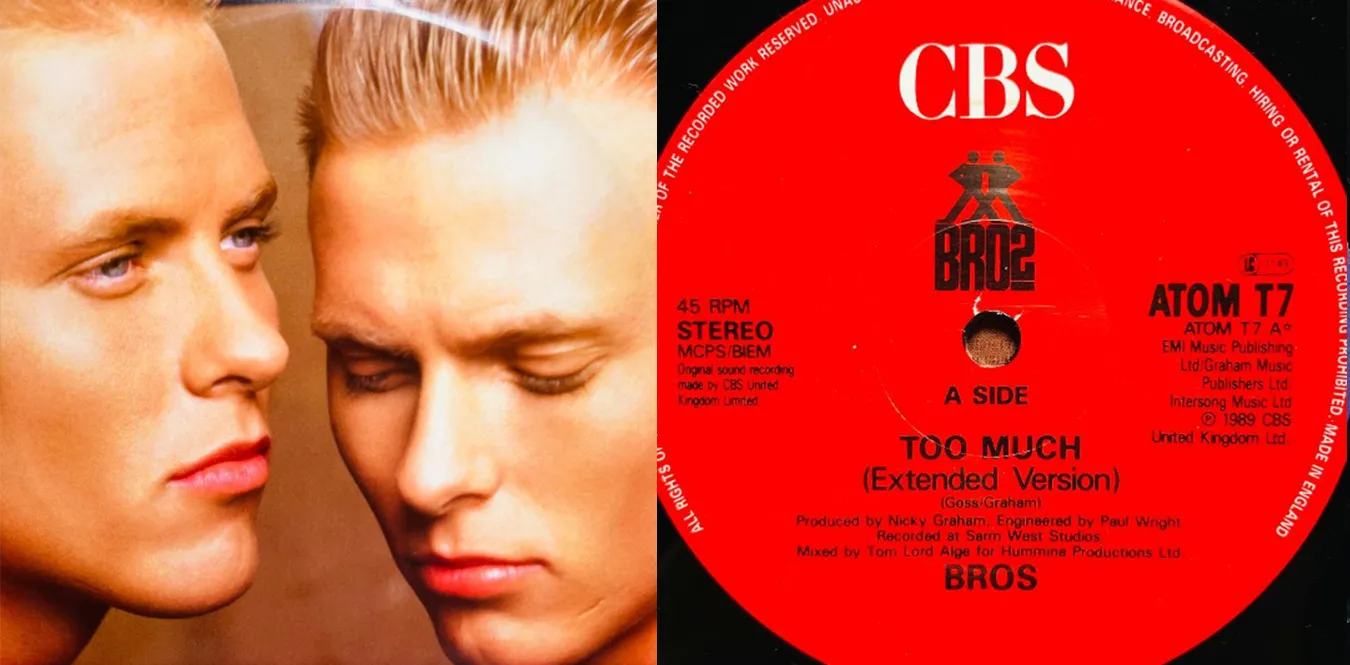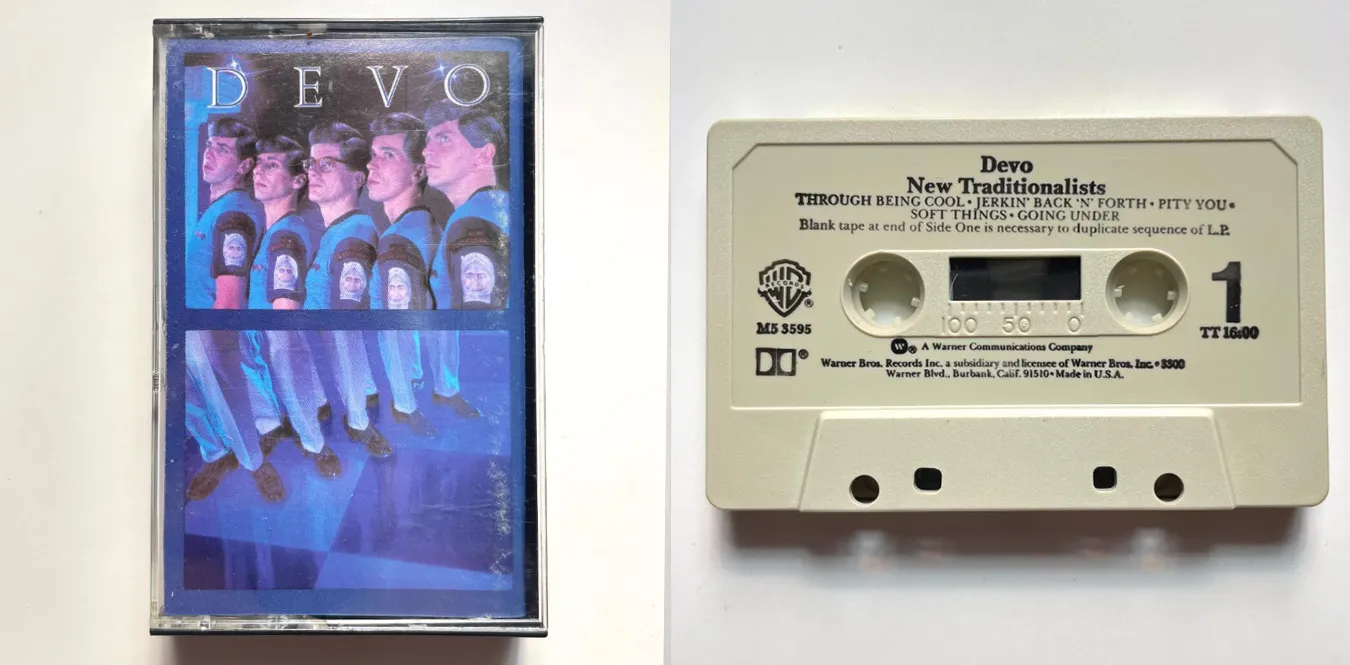[Column] DEVO and Energy Dome ─ Utopia and degeneration theory in the technological age
Column en 80s New-Wave Synth-Pop Techno![[Column] DEVO and Energy Dome ─ Utopia and degeneration theory in the technological age](/../assets/images/column-devo-energy-dome.webp)
Prologue: What does the red dome mean?
Text: mmr|Theme: Using DEVO’s symbol “Energy Dome” as a clue, deciphering the theory of degeneration, technology, DIY thinking, and the transformation of pop culture
In the late 1970s, American new wave band DEVO embodied a new era of pop art, not only with their music but also with their visual iconography. The symbol of this is the red plastic hat they wore on stage and in their music videos – Energy Dome.
This strange, futuristic design was more than just a costume. According to DEVO, it is “a device for reusing the energy that humans wastefully emit.” It was also a device that embodied their philosophy of De-Evolution through humor and irony.
Chapter 1: The idea of De-Evolution
The band name DEVO comes from “De-Evolution” – the paradoxical concept that “humanity is not evolving, but rather degenerating.” This idea was born in response to the turmoil in America from the late 1960s to the 1970s: the Vietnam War, environmental pollution, and the runaway consumer society.
Mark Mothersbaugh and Gerald Casale from Akron, Ohio, developed ““doubts about the myth of evolution’’ while studying art and politics. They realized that religious progressivism and belief in technology were ultimately variations on the same fantasy, and conceived of ““degenerate pop’’ to satirize this.
“We’re all DEVO.” — Mark Mothersbaugh
This phrase was both an anti-establishment slogan and a social satire.
Chapter 2: Departing from art school
DEVO has been a “music unit” and a “multimedia project” from the beginning. They will project live slide footage, create handmade videos, and perform performance art. His early film ““The Truth About De-Evolution’’ from 1976 is known as an experimental film documenting American decadence.
The film won an award at the Ann Arbor Film Festival in 1977 and caught the attention of David Bowie and Iggy Pop. After that, DEVO signed a contract with Warner Brothers and released their debut album ““Q: Are We Not Men? A: We Are DEVO!’’ (1978) with Brian Eno as producer.
Chapter 3: The emergence and semantic structure of the energy dome
Energy Dome first appeared on the band’s 1980 album Freedom of Choice. Its shape is reminiscent of ancient architecture and the stepped pyramids of the Incas. Mark Mothersbaugh later said:
“It was designed according to ancient energy principles — it recycles the energy that escapes from the top of your head.” (It was designed based on ancient energy principles, recycling the energy that escapes from the top of the head)
This word “recycle” is important. For DEVO, technology is not a symbol of domination, but a means of reuse and redefinition. In other words, the Energy Dome is a humor device for “laughing at the system within the system.”
Chapter 4: DIY culture and techno-anarchism
DEVO used home-made electronics and synthesizers to create their sound, with a tongue-in-cheek look at commercial rock. Using Roland and ARP synths, they modified their own and reproduced proto-techno loop structures live. This practice can be said to be the prototype of the later Independent/Lo-Fi movement.
They satirized the corporate world while taking advantage of corporate methods (logos, slogans, commercialization). In the sense that DEVO itself became a “brand” and presented the contradictions of an anti-capitalist brand, they were also the forerunners of post-modern art groups.
Chapter 5: Function as pop ─ “Whip It” and its misconceptions
On the surface, the 1980 smash hit “Whip It” sounds like just comical synth-pop. However, the lyrics are a parody of anti-heroism, saying, ““Fix the world yourself.’’ DEVO’s humor was not just nonsense, but functioned as a critique of a media-manipulated society.
In their music videos, they condense white laboratories, synthesized sounds, and mechanical movements into a pop-cynic format. This is similar to Warhol’s repetitive aesthetic, and is why they are said to be the first musical group to aestheticize irony.
Chapter 6: Costume culture as social satire
Energy Dome performed a parody of obedience through futuristic uniforms, while their punk contemporaries expressed rebellion with safety pins and leather. ““Performing obedience is the most radical form of resistance.’’ That was DEVO’s paradoxical message.
The structure can be easily visualized in a diagram as follows:
This “performance of obedience” is the gene that later led to Daft Punk and Kraftwerk, as well as today’s anonymous artist culture.
Chapter 7: DEVO’s visual culture and anime structure
DEVO’s music videos consist of post-anime edits that reflect the information overload of the television generation. Fast-forwarding, replaying in reverse, and emphasizing artificial movements make it seem as if humans themselves have become robot-like beings. This visual style later influenced the production aesthetics of Japan’s ““Detroit Metal City’’ and Perfume.
Chapter 8: Reassessment and Reboot since the 90s
In the late 1980s, DEVO went into decline as MTV culture changed. In the 1990s, it was reevaluated as a pioneer of the Internet era. Their self-satirical brand strategy foreshadowed post-Web 2.0 self-commodification.
They reunited in the 2000s and wrote “Something for Everybody” (2010), a satire on “democracy in the age of algorithms.” In the 2020s, he continues to update his theory of degeneration to include NFTs and AI culture.
Chapter 9: DEVO’s trajectory as seen in the chronology
Chapter 10: Today’s Significance of Energy Dome
The Energy Dome is still loved by DEVO fans as a “helmet of thought.” During the coronavirus pandemic, Energy domes with face shields are sold, It has once again attracted attention as a warning about environmental issues.
In other words, the Energy Dome is a social device that ““transforms’’ with each era. Each time, while making fun of our illusions of “evolution,” It shows us the heretical wisdom of ““affirming degeneration.’’
Conclusion: Freedom to degenerate
DEVO’s message is not just irony, but a philosophy for self-transformation. Under pressure to evolve, they dared to degenerate. Rather, that choice becomes a means of restoring human freedom.
“Freedom of Choice is what you got. Freedom from choice is what you want.” ─ DEVO, Freedom of Choice (1980)
Energy dome is not a helmet that closes off the future. It may be an icon for us to once again have the freedom to choose. —
Related materials/references
Devo – New Traditionalists
“New Traditionalists” is the fourth album by US new wave band Devo, released in 1981, and the band’s first completely self-produced album.
Following the success of their previous album Freedom Of Choice (Desire Psychology), which included “Whip It,” this album has a minimalist atmosphere with an emphasis on synthesizer riffs, rhythm, and electronic percussion, with the concept of “deevolution.”
Tracklist
A1. Through Being Cool
A2. Jerkin' Back 'N' Forth
A3. Pity You
A4. Soft Things
A5. Going Under
B1. Race Of Doom
B2. Love Without Anger
B3. The Super Thing
B4. Beautiful World
B5. Enough Said
B6. Working In The Coal Mine


![[Column] Creation alone: The era of the bedroom producer](/../assets/images/column-bedroom-producer-era.webp)

![[Column] Synthpop: The era of electronic dreams](/../assets/images/column-synth-pop.webp)
![[Column] Haruomi Hosono - Traveler of sound, quiet innovation that transcends the times](/../assets/images/column-haruomi-hosono.webp)

![[Column] New Wave: The intersection of post-punk music innovation and 1980s urban culture](/../assets/images/column-new-wave.webp)




